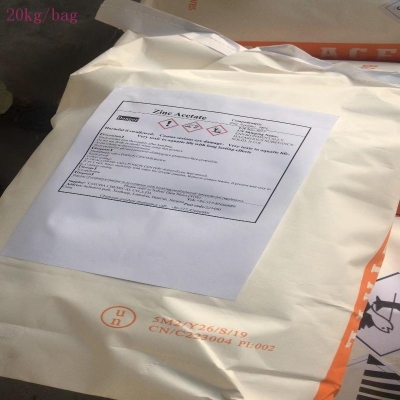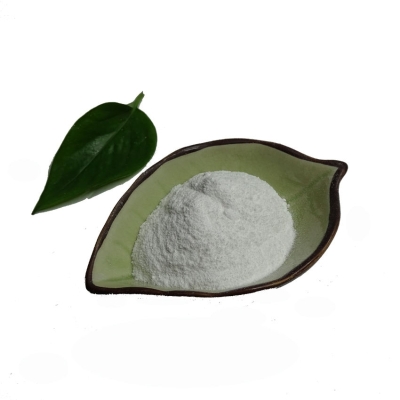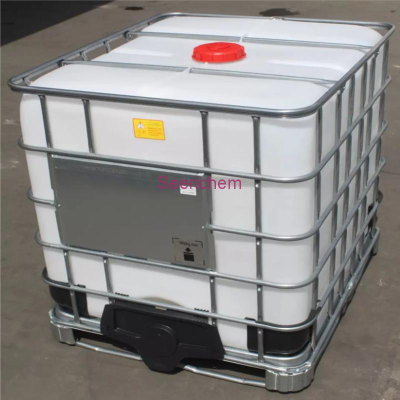-
Categories
-
Pharmaceutical Intermediates
-
Active Pharmaceutical Ingredients
-
Food Additives
- Industrial Coatings
- Agrochemicals
- Dyes and Pigments
- Surfactant
- Flavors and Fragrances
- Chemical Reagents
- Catalyst and Auxiliary
- Natural Products
- Inorganic Chemistry
-
Organic Chemistry
-
Biochemical Engineering
- Analytical Chemistry
-
Cosmetic Ingredient
- Water Treatment Chemical
-
Pharmaceutical Intermediates
Promotion
ECHEMI Mall
Wholesale
Weekly Price
Exhibition
News
-
Trade Service
The sales of fertilizers mainly depend on crop yields and prices.
In 2016, the prices of agricultural products grown in Guangdong, Guangdong and Guizhou were generally low, which caused difficulties in the overall sales of fertilizers.
Coupled with fierce market competition, most dealers reported that sales this year have fallen compared to the same period in previous years, and profits have been further diluted.
If this year's low prices affect crop planting next year, the dealer's dilemma will continue.
Difficulties: The quantity of agricultural products is large and the price is low.
It is difficult to sell chemical fertilizers.
The output of fruits in Guangxi is very high, but the benefits are not very good, especially bananas are at a slight loss.
The purchase price of bananas in August-September was high at 2.
5 yuan/jin, but in the later stage of the concentrated banana picking season, restrictions exceeded orders.
The cost of banana transportation increased by 20%-30%, which caused panic among banana farmers, tight transportation, and a serious blow to bananas.
During the harvest, the banana market suffered a cliff-like decline, and the price fell below the cost price.
In addition, the Philippines and other countries import a large number of bananas, and many people grow bananas in Vietnam, Myanmar, Laos and other countries, which has dealt a great blow to domestic bananas, so the enthusiasm for supplementing fertilizer is not high.
In particular, banana farmers in Guangxi are mostly investors from other provinces.
They use more fertilizers on credit.
This year almost 70% of the losses will be lost, and they will run away.
There are many large planting households, but the funds for real investment in agriculture are not much.
Many of them are invested by groups composed of multiple individuals, planting hundreds of acres or even thousands of acres.
Many small businesses directly connect with farmers and give these farmers more channels to obtain resources.
Therefore, when they can't find a way to pay, they will find some small factories that are willing to sell them on credit.
However, small factories have reduced many intermediate links and have a large profit margin.
Even if a part of it is sold on credit, it can ensure that the capital chain will not be broken.
Way out: reduce credit sales and transportation links.
Now the profit margins of dealers are getting smaller and smaller.
First, because the wages of workers are getting higher and higher, the unloading of fertilizer has increased from 10 yuan/ton to 15 yuan/ton, and the total loading and unloading costs are 30 yuan/ Tons, the freight has also risen from 50 yuan/ton to 70 yuan/ton.
Second, grassroots agrochemical services also account for a large amount of costs.
In the face of lower profits, some dealers have adopted the method of reducing credit sales.
In the past, credit sales accounted for almost half of sales.
However, in the past two years, dealers have gradually reduced the proportion of credit sales, which is currently 30%.
Other dealers save costs by reducing transportation links.
Specifically, they first hold an order meeting for grassroots retailers, and then sign an order with the manufacturer.
After the fertilizer arrives at the station, it will not enter the warehouse, but will be directly delivered to the township retailers.
Suppose the wholesale price is 2300 yuan/ton, and the pick-up and delivery price at the warehouse is also this price, so the retailer is also willing to accept the delivery price.
In this way, the cost of unloading and loading the truck after arriving at the station, and then entering the warehouse to unload the truck is 45 yuan/ton, and the intermediate transportation costs can also be saved.
Raw materials The raw materials market started early in 2016.
Due to the rising market prices, there is a demand for purchase.
For example, in Guangxi, 80% of raw materials are imported.
In terms of urea, the main sources of goods come from Shanxi and Shaanxi.
Due to railway transportation restrictions, only Shaanxi goods can come here.
After the RMB exchange rate exceeded 7.
0, potash fertilizer was bullish, so the market rose rapidly year-on-year, and everyone had a strong desire to purchase goods.
In terms of phosphate fertilizer, due to the rigid costs of natural gas, sulfur, coal, etc.
, both monoammonium and calcium-magnesium phosphate fertilizers have risen by 25%-30%.
Phosphorus was in a low price in the early stage, but it has also risen by about 300 yuan/ton due to the low operating rate.
In addition, the environmental protection inspection is relatively strong, and the raw material of monoammonium is lack of sulfur, so the increase of monoammonium is larger.
In terms of compound fertilizers, except for high-end fertilizers that will increase in price, ordinary compound fertilizers will basically remain stable.
Some dealers also said that the trend of fertilizer prices in the future is not easy to predict.
It depends on whether railway transportation can be eased, as well as coal, imported sulfur prices, shipping and large contract price trends, in addition to currency exchange rate changes and production capacity changes.
The market outlook predicts that dealers are mostly optimistic about fertilizer prices next year, believing that fertilizer prices will slowly increase due to multiple factors such as capacity reduction, transportation restrictions, and coal prices.
The later market wholesale prices will remain at 1700-1800 yuan/ton, or even surging.
To a high of 2,000 yuan/ton.
After 0, potash fertilizer is bullish, so the market has increased rapidly year-on-year, and everyone has a strong desire to purchase goods.
In terms of phosphate fertilizers, due to the rigid costs of natural gas, sulfur, and coal, both monoammonium and calcium-magnesium phosphate fertilizers have risen by 25%-30%.
Phosphorus was in a low price in the early stage, but it has also risen by about 300 yuan/ton due to the low operating rate.
In addition, the environmental protection inspection is relatively strong, and the raw material of monoammonium is lack of sulfur, so the increase of monoammonium is larger.
In terms of compound fertilizers, except for high-end fertilizers that will increase in price, ordinary compound fertilizers will basically remain stable.
Some dealers also said that the trend of fertilizer prices in the market outlook is not easy to predict.
It depends on whether railway transportation can be eased, as well as coal, imported sulfur prices, shipping and large contract price trends, in addition to currency exchange rate changes and production capacity changes.
The market outlook predicts that dealers are mostly optimistic about fertilizer prices next year, believing that fertilizer prices will slowly increase due to multiple factors such as capacity reduction, transportation restrictions, and coal prices.
The later market wholesale prices will remain at 1700-1800 yuan/ton, or even surging.
To a high of 2,000 yuan/ton.
After 0, potash fertilizer is bullish, so the market has increased rapidly year-on-year, and everyone has a strong desire to purchase goods.
In terms of phosphate fertilizers, due to the rigid costs of natural gas, sulfur, and coal, both monoammonium and calcium-magnesium phosphate fertilizers have risen by 25%-30%.
Phosphorus was in a low price in the early stage, but it has also risen by about 300 yuan/ton due to the low operating rate.
In addition, the environmental protection inspection is relatively strong, and the raw material of monoammonium is lack of sulfur, so the increase of monoammonium is larger.
In terms of compound fertilizers, except for high-end fertilizers that will increase in price, ordinary compound fertilizers will basically remain stable.
Some dealers also said that the trend of fertilizer prices in the market outlook is not easy to predict.
It depends on whether railway transportation can be eased, as well as coal, imported sulfur prices, shipping and large contract price trends, in addition to currency exchange rate changes and production capacity changes.
The market outlook predicts that dealers are mostly optimistic about fertilizer prices next year, believing that fertilizer prices will slowly increase due to multiple factors such as capacity reduction, transportation restrictions, and coal prices.
The later market wholesale prices will remain at 1700-1800 yuan/ton, or even surging.
To a high of 2,000 yuan/ton.
In 2016, the prices of agricultural products grown in Guangdong, Guangdong and Guizhou were generally low, which caused difficulties in the overall sales of fertilizers.
Coupled with fierce market competition, most dealers reported that sales this year have fallen compared to the same period in previous years, and profits have been further diluted.
If this year's low prices affect crop planting next year, the dealer's dilemma will continue.
Difficulties: The quantity of agricultural products is large and the price is low.
It is difficult to sell chemical fertilizers.
The output of fruits in Guangxi is very high, but the benefits are not very good, especially bananas are at a slight loss.
The purchase price of bananas in August-September was high at 2.
5 yuan/jin, but in the later stage of the concentrated banana picking season, restrictions exceeded orders.
The cost of banana transportation increased by 20%-30%, which caused panic among banana farmers, tight transportation, and a serious blow to bananas.
During the harvest, the banana market suffered a cliff-like decline, and the price fell below the cost price.
In addition, the Philippines and other countries import a large number of bananas, and many people grow bananas in Vietnam, Myanmar, Laos and other countries, which has dealt a great blow to domestic bananas, so the enthusiasm for supplementing fertilizer is not high.
In particular, banana farmers in Guangxi are mostly investors from other provinces.
They use more fertilizers on credit.
This year almost 70% of the losses will be lost, and they will run away.
There are many large planting households, but the funds for real investment in agriculture are not much.
Many of them are invested by groups composed of multiple individuals, planting hundreds of acres or even thousands of acres.
Many small businesses directly connect with farmers and give these farmers more channels to obtain resources.
Therefore, when they can't find a way to pay, they will find some small factories that are willing to sell them on credit.
However, small factories have reduced many intermediate links and have a large profit margin.
Even if a part of it is sold on credit, it can ensure that the capital chain will not be broken.
Way out: reduce credit sales and transportation links.
Now the profit margins of dealers are getting smaller and smaller.
First, because the wages of workers are getting higher and higher, the unloading of fertilizer has increased from 10 yuan/ton to 15 yuan/ton, and the total loading and unloading costs are 30 yuan/ Tons, the freight has also risen from 50 yuan/ton to 70 yuan/ton.
Second, grassroots agrochemical services also account for a large amount of costs.
In the face of lower profits, some dealers have adopted the method of reducing credit sales.
In the past, credit sales accounted for almost half of sales.
However, in the past two years, dealers have gradually reduced the proportion of credit sales, which is currently 30%.
Other dealers save costs by reducing transportation links.
Specifically, they first hold an order meeting for grassroots retailers, and then sign an order with the manufacturer.
After the fertilizer arrives at the station, it will not enter the warehouse, but will be directly delivered to the township retailers.
Suppose the wholesale price is 2300 yuan/ton, and the pick-up and delivery price at the warehouse is also this price, so the retailer is also willing to accept the delivery price.
In this way, the cost of unloading and loading the truck after arriving at the station, and then entering the warehouse to unload the truck is 45 yuan/ton, and the intermediate transportation costs can also be saved.
Raw materials The raw materials market started early in 2016.
Due to the rising market prices, there is a demand for purchase.
For example, in Guangxi, 80% of raw materials are imported.
In terms of urea, the main sources of goods come from Shanxi and Shaanxi.
Due to railway transportation restrictions, only Shaanxi goods can come here.
After the RMB exchange rate exceeded 7.
0, potash fertilizer was bullish, so the market rose rapidly year-on-year, and everyone had a strong desire to purchase goods.
In terms of phosphate fertilizer, due to the rigid costs of natural gas, sulfur, coal, etc.
, both monoammonium and calcium-magnesium phosphate fertilizers have risen by 25%-30%.
Phosphorus was in a low price in the early stage, but it has also risen by about 300 yuan/ton due to the low operating rate.
In addition, the environmental protection inspection is relatively strong, and the raw material of monoammonium is lack of sulfur, so the increase of monoammonium is larger.
In terms of compound fertilizers, except for high-end fertilizers that will increase in price, ordinary compound fertilizers will basically remain stable.
Some dealers also said that the trend of fertilizer prices in the future is not easy to predict.
It depends on whether railway transportation can be eased, as well as coal, imported sulfur prices, shipping and large contract price trends, in addition to currency exchange rate changes and production capacity changes.
The market outlook predicts that dealers are mostly optimistic about fertilizer prices next year, believing that fertilizer prices will slowly increase due to multiple factors such as capacity reduction, transportation restrictions, and coal prices.
The later market wholesale prices will remain at 1700-1800 yuan/ton, or even surging.
To a high of 2,000 yuan/ton.
After 0, potash fertilizer is bullish, so the market has increased rapidly year-on-year, and everyone has a strong desire to purchase goods.
In terms of phosphate fertilizers, due to the rigid costs of natural gas, sulfur, and coal, both monoammonium and calcium-magnesium phosphate fertilizers have risen by 25%-30%.
Phosphorus was in a low price in the early stage, but it has also risen by about 300 yuan/ton due to the low operating rate.
In addition, the environmental protection inspection is relatively strong, and the raw material of monoammonium is lack of sulfur, so the increase of monoammonium is larger.
In terms of compound fertilizers, except for high-end fertilizers that will increase in price, ordinary compound fertilizers will basically remain stable.
Some dealers also said that the trend of fertilizer prices in the market outlook is not easy to predict.
It depends on whether railway transportation can be eased, as well as coal, imported sulfur prices, shipping and large contract price trends, in addition to currency exchange rate changes and production capacity changes.
The market outlook predicts that dealers are mostly optimistic about fertilizer prices next year, believing that fertilizer prices will slowly increase due to multiple factors such as capacity reduction, transportation restrictions, and coal prices.
The later market wholesale prices will remain at 1700-1800 yuan/ton, or even surging.
To a high of 2,000 yuan/ton.
After 0, potash fertilizer is bullish, so the market has increased rapidly year-on-year, and everyone has a strong desire to purchase goods.
In terms of phosphate fertilizers, due to the rigid costs of natural gas, sulfur, and coal, both monoammonium and calcium-magnesium phosphate fertilizers have risen by 25%-30%.
Phosphorus was in a low price in the early stage, but it has also risen by about 300 yuan/ton due to the low operating rate.
In addition, the environmental protection inspection is relatively strong, and the raw material of monoammonium is lack of sulfur, so the increase of monoammonium is larger.
In terms of compound fertilizers, except for high-end fertilizers that will increase in price, ordinary compound fertilizers will basically remain stable.
Some dealers also said that the trend of fertilizer prices in the market outlook is not easy to predict.
It depends on whether railway transportation can be eased, as well as coal, imported sulfur prices, shipping and large contract price trends, in addition to currency exchange rate changes and production capacity changes.
The market outlook predicts that dealers are mostly optimistic about fertilizer prices next year, believing that fertilizer prices will slowly increase due to multiple factors such as capacity reduction, transportation restrictions, and coal prices.
The later market wholesale prices will remain at 1700-1800 yuan/ton, or even surging.
To a high of 2,000 yuan/ton.







